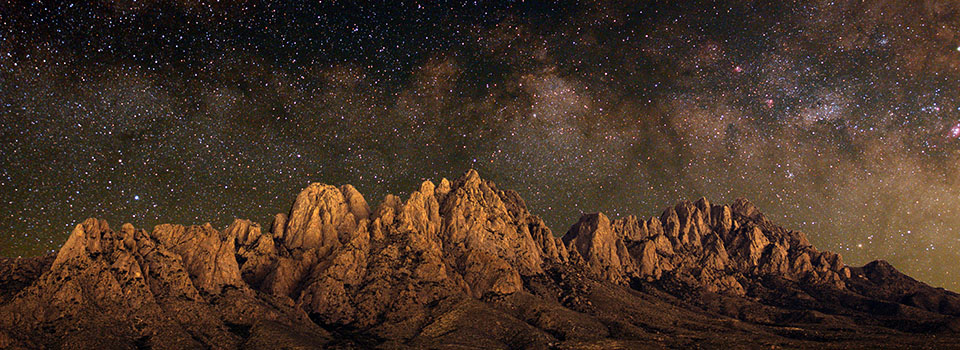
When you look up at the night sky, what do you see? Stars of different brightness and color, the Moon and some planets, constellations, and maybe the subtle glow of the Milky Way?
As amazing as our eyes are, they aren't all that sensitive to dim light. The night sky is actually loaded with objects we can't see. However, the invisible sky is easily seen with long camera exposures. A special type of light, Hydrogen-Alpha (Ha), is a deep red color and emitted by stars and nebula when their hydrogen gas is energized. This picture was taken with a Ha filter to more prominently show these nebulous regions.
Imaged almost from horizon to horizon, this mosaic of the Milky Way during our winter season is huge. But so are the nebula in it. For example, the bright round nebula just left of top center is the Rosette Nebula and it's more than twice the diameter of a full moon! Many are way larger than it. So the invisible sky isn't seen because it's small, it's because it's too dim for our eyes to see.
Several months ago I had made a mosaic of the Summer Milky Way taken in Hydrogen-Alpha light. Last night it was time to take the images to construct this picture, the Winter Milky Way, also in Ha light.
The mosaic is 11 frames taken with a 24mm lens on the SBig STF-8300M camera. Each frame covered 41 x 31 degrees and they are centered on 15 degree increments along Galactic Longitude 120 to 270. Every frame is actually a stack of (3) 180-second subs through the Ha filter. Stacking dramatically reduces noise in the image resulting in a smoother overall appearance.
I used AstroArt 7 to control the capture process. A script I wrote positioned my little iOptron ZEQ-25 mount toward the desired aim point in the sky, took the three images used for each frame, then moved to the next point. The whole capture process took about 2.5 hours.
A "big picture" like this helps to visualize how the various sky objects are positioned relative to each other. It also helps me to pick out future targets for close-up photos.
